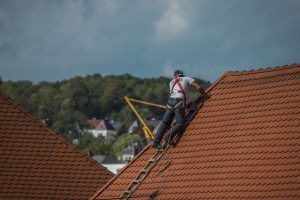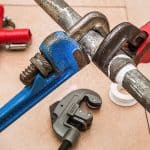Nature brings many potential threats to your property. Different weather conditions, including winds, heat, cold and precipitation, may damage your property beyond repair. Even though you cannot control nature, you can at least prepare for every unfortunate scenario. Don’t let it catch you by surprise! Knowing your enemy is half the battle. Therefore, familiarize yourself with the most common natural property damage and how to prevent it before it is too late.

Types of weather and the damage they cause
Wind
Wind is one of the most common causes of natural property damage. Shingles can be scraped off the rooftops and gutters can be pulled away from rooflines due to extremely strong winds. Even weaker winds can knock down trees which can damage your roofs, windows, cars or anything else they fall onto.
Hurricane
Many things can go wrong during a hurricane. For instance, roofs and siding can be pulled apart, windows can be broken, door hinges often fail. Floods and strong winds that come with hurricanes can destroy property. Basements are often the first to flood. Flying debris can damage basically everything, from smaller things to entire roofs. Septic tank issues and water contamination can be caused by flooding. Also, fires and gas leaks are common consequences of a hurricane.
Heat
Everyone loves the summer and warm weather but extreme heat can be as harmful to your property as any other natural disaster. Longer periods with high temperatures can damage your possessions such as furniture, carpets, paintings, etc. For instance, colors might fade and fabrics might become frail.
Rain
A little rain does not hurt. However, larger amounts of it can cause serious property damage. If there are any gaps in your roof or walls, water can leak into your home causing all sorts of roof damage. For example, mold and mildew can appear over time. Furthermore, too much water in a short time can overload gutters which can lead to damaging the foundation. It can also damage wall paint, furniture, ceilings, floors… basically everything.

Low temperatures
Even without precipitation, low temperatures can damage your property. By low, we mean around 20 degrees and below. Pipes can freeze and burst due to extreme cold which leads to flooding. Pipes that are connected to outdoor spigots and/or run through uninsulated walls are most prone to freezing.
Ice
Precipitation and low temperatures cause ice to form. Built up ice can form ice dams in gutters. These dams can buckle and dislodge gutters and damage the roof. Additionally, melting ice can leak into the house and cause all kinds of water damage. Ice storms can knock down trees, cause traffic accidents and down power lines.
Snow
Many of us like snow and the fun activities that come with it. Although fun, snow is far from harmless. The weight of snow can bend and bend or break gutters, cause buckling or holes in roofs. Moreover, it can bend and break tree branches or entire trees which can fall onto your property. Also, melted snow leads to flooding and all its negative consequences. Heavy snowfall may even cause your entire roof to collapse.
Hail
One hail storm is enough to cause millions of dollars worth of damage, depending on the weight and size of the hailstones. Large hailstones can dent or bend gutters, poke holes in the roof, dent your vehicles, etc. Oklahoma and Texas are at the highest risk of hailstorms. The destructive power of hailstorms can be particularly fatal for crops.
What to do after suffering common natural property damage?
Study your insurance policy carefully to be sure what is covered and what isn’t. Contact your insurance company as soon as you notice any damage. Do not repair or remove anything, no matter how damaged, before documenting the damage. You can make videos or take photos, for example. Then, arrange emergency repairs in order to prevent further damage. Always keep all the receipts from repairs because they will be necessary if you decide to make a home insurance claim. After making the claim, your insurance claims adjuster will investigate the claim you made and suggest an effective settlement.
How to protect yourself from common natural property damage

Even if you have an insurance policy protecting you from weather damage, that may not be enough. In order to be eligible to make an insurance claim, you must take every precaution to protect your home from common natural property damage. When you make a claim, insurers will investigate if the weather or the poor condition of your home was to blame for the damage. If done regularly, basic maintenance could help you save your time and money.
During the summer season, use drapes and shades to protect your belongings from sunlight and turn on air conditioning at least during the hottest part of the day.
During the winter season, do not forget to regularly remove excess ice and snow from your roof, gutters and drains. In case you won’t be spending the winter at home, ask someone to come from time to time and check if everything is in order. As low temperatures can cause a lot of damage, it would be good to heat your home during the coldest part of the day and let warm air circulate.
How to prepare for cold weather
- Repair taps that drip
- Turn off water to outside taps
- Maximize wall and loft insulation
- Make sure the pipes in the loft run under insulation
- Make sure the pipes and tanks are properly lagged
How to prepare for a storm
- Secure doors and windows
- Unblock clogged gutters and drains
- Repair fences or walls
- Repair loose roof tiles
- Remove trees that are close to the house and may cause more natural property damage
- Store garden furniture and other outdoor items in a safe place
- Do not park your car close to the trees





